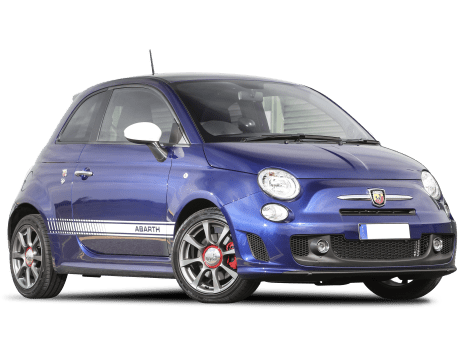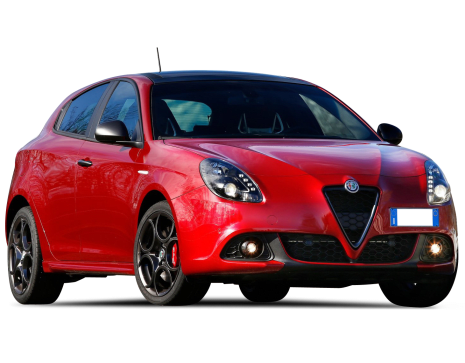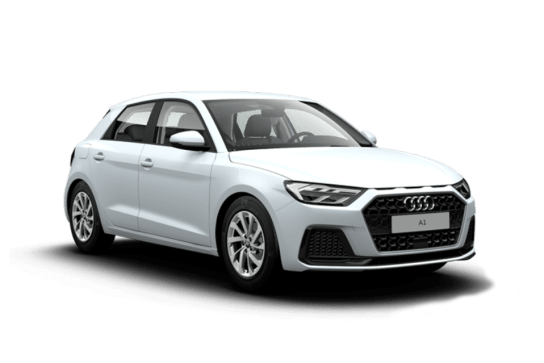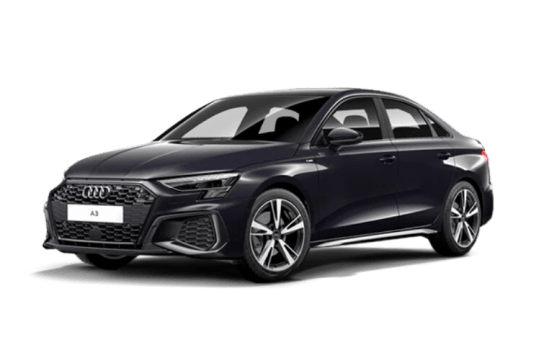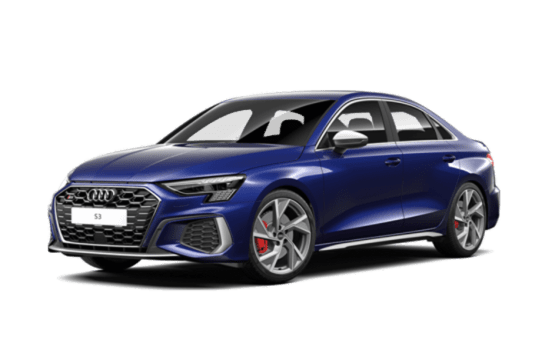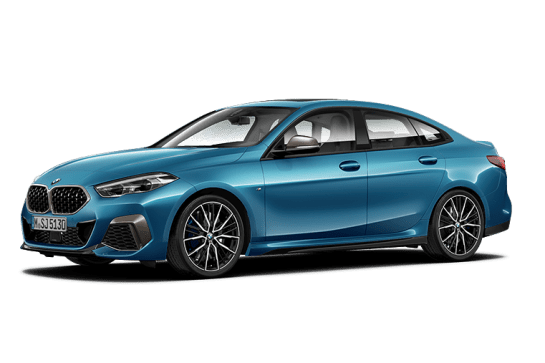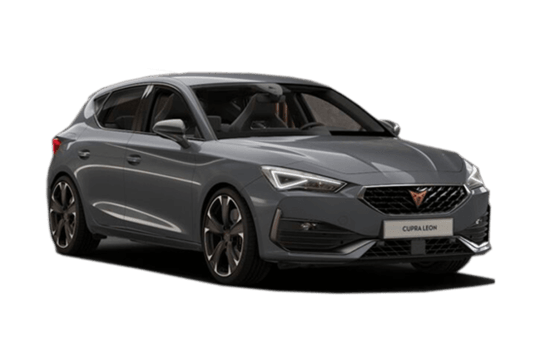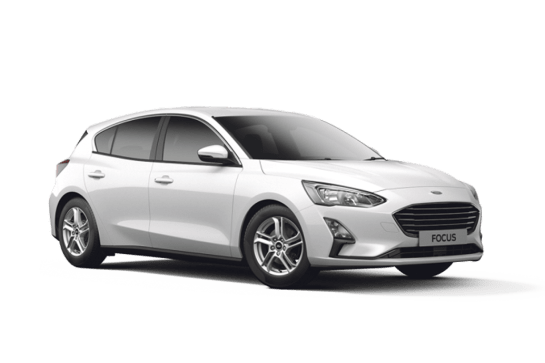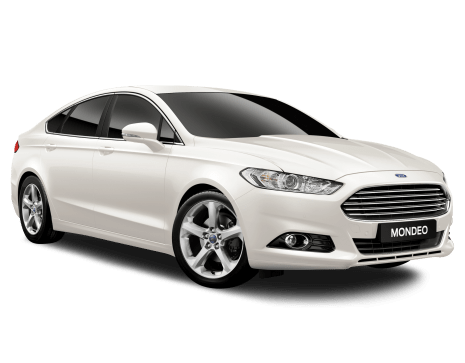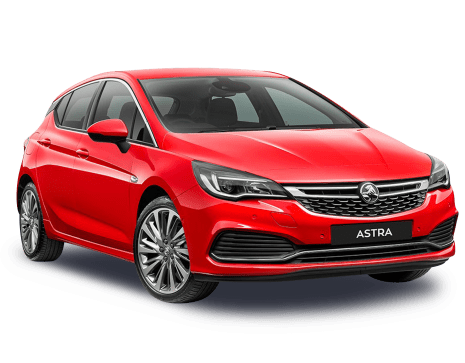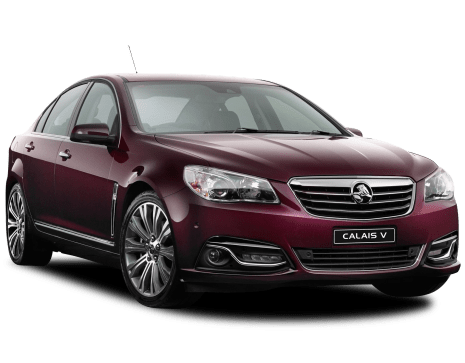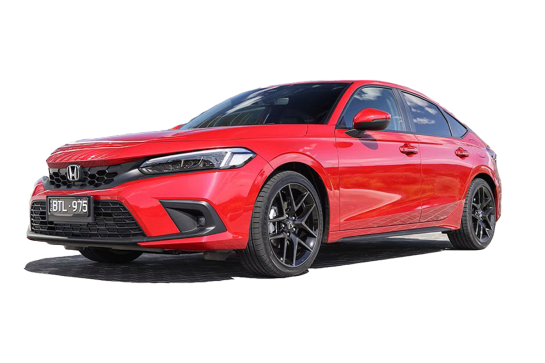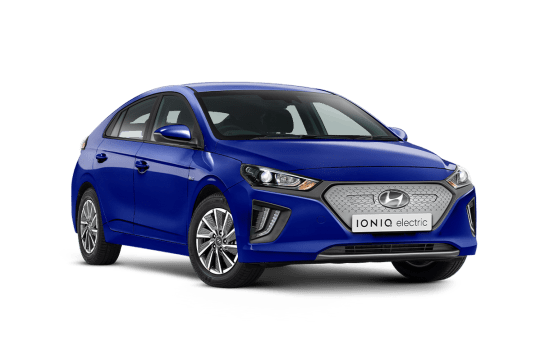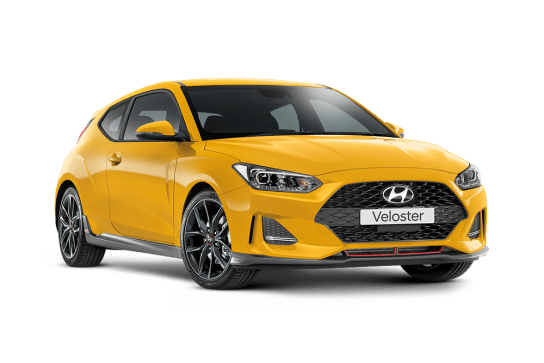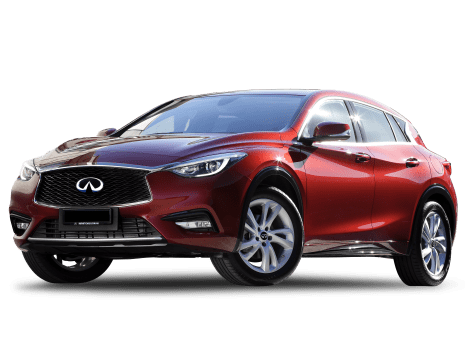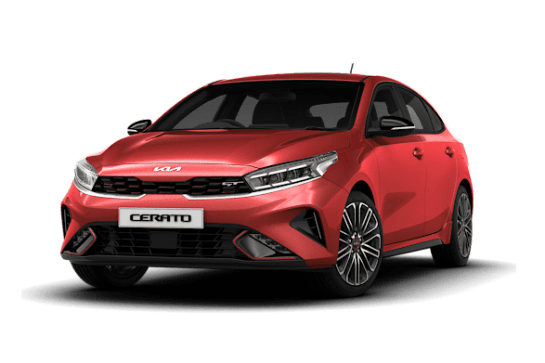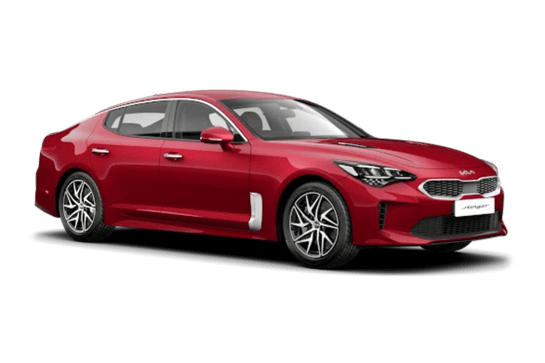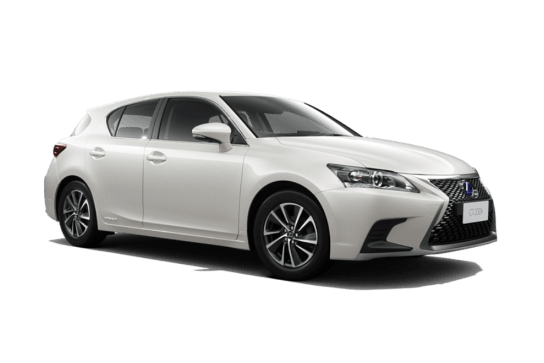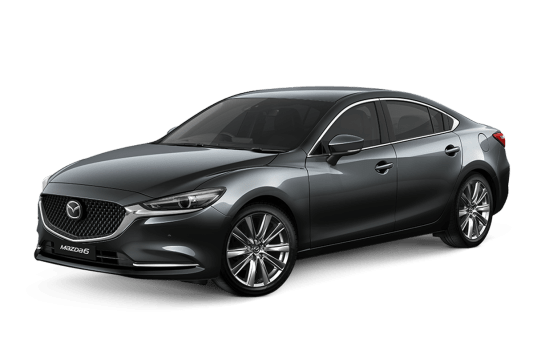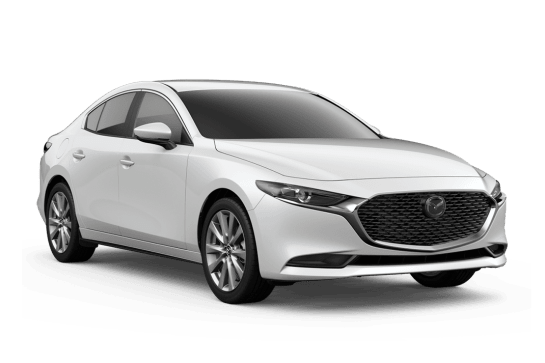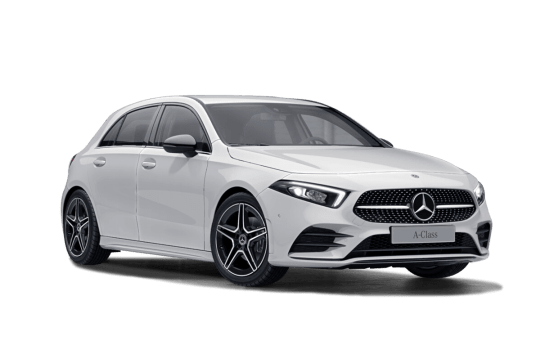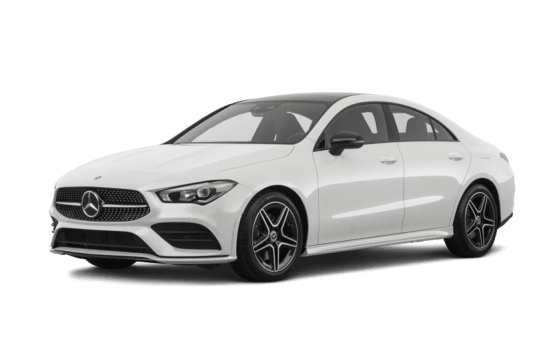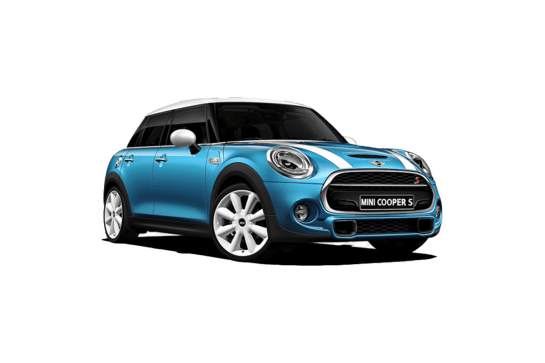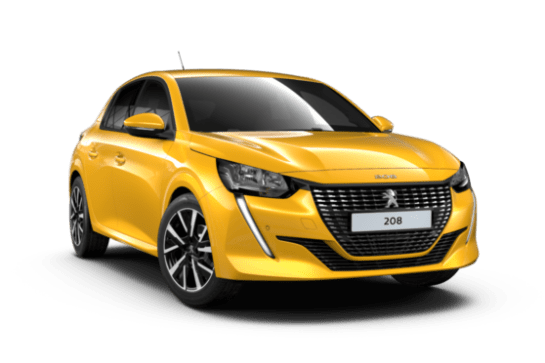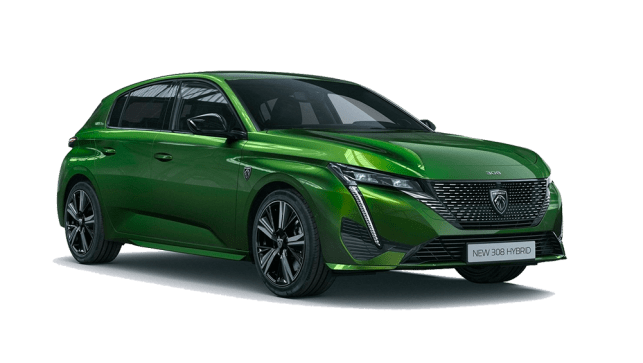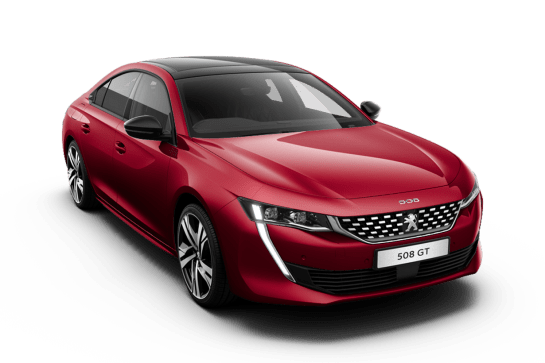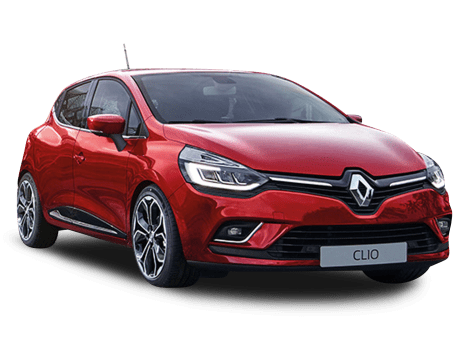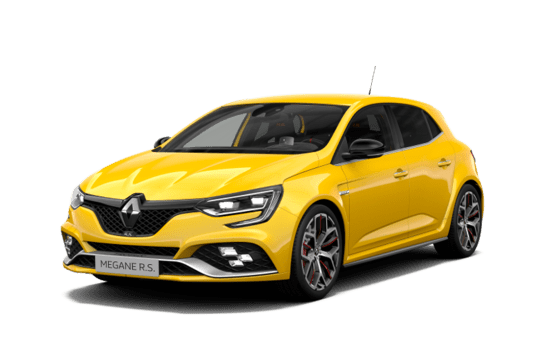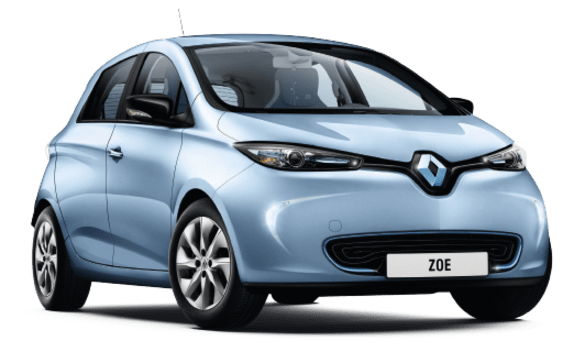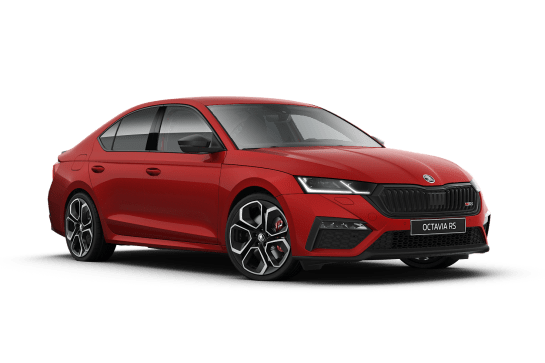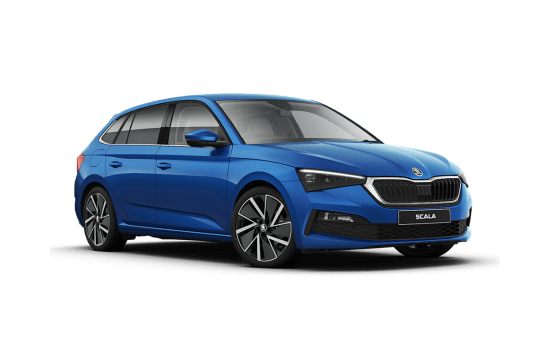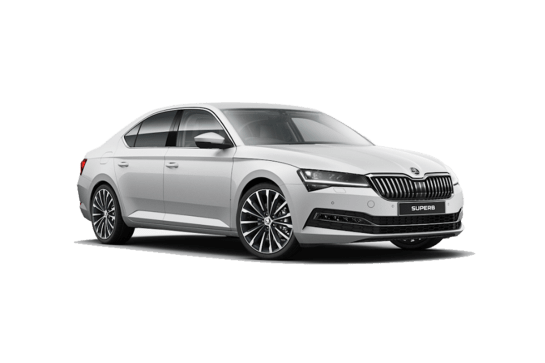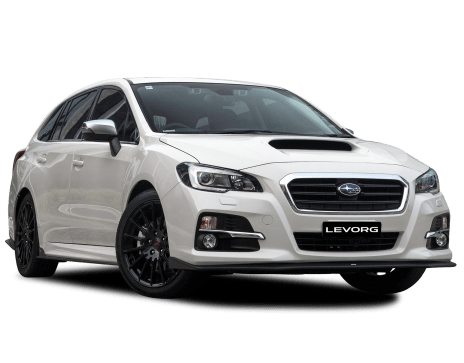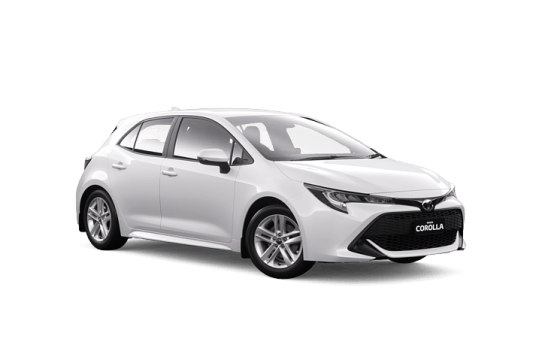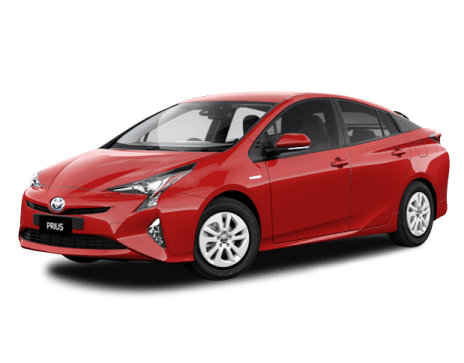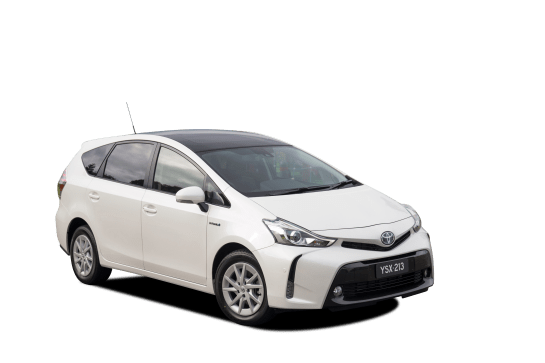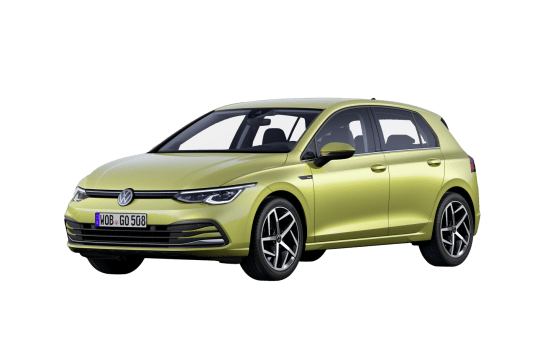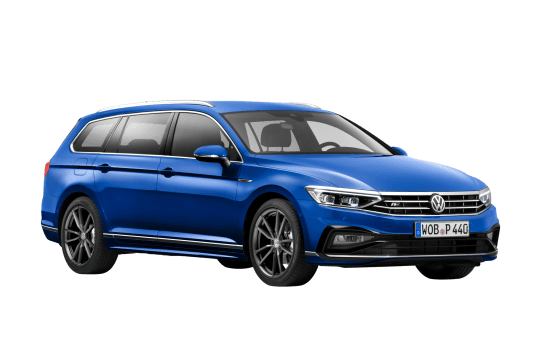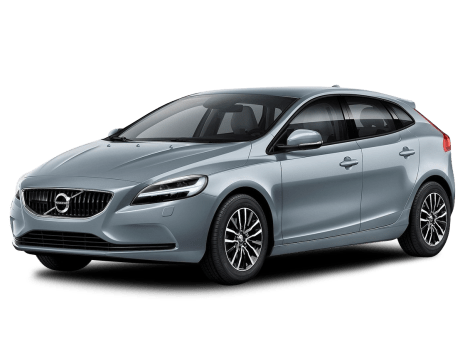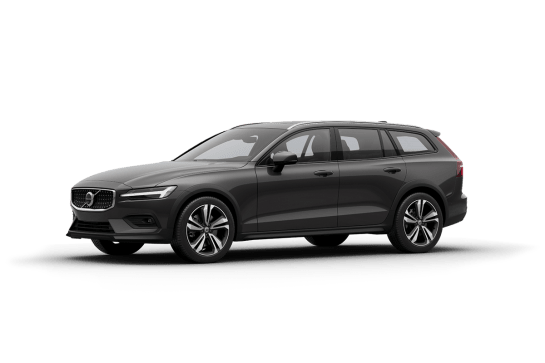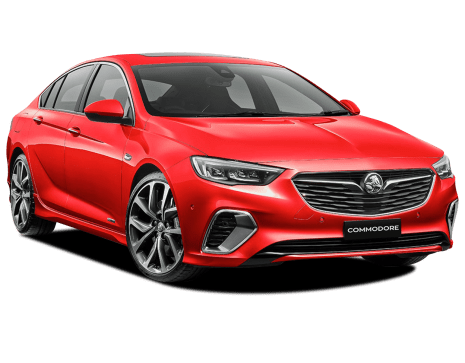
Holden Commodore VS Renault Megane
Holden Commodore
Likes
- Comfortable but dynamic chassis
- Strong and smooth 2.0 turbo
- Liftback's boot practicality over a sedan
Dislikes
- Relatively unassuming looks
- V6 not as refined as the 2.0 turbo
- VXR doesn't match the romance of old V8 SS
Renault Megane
Likes
- Sexy looks
- You can still get a manual!
- More practical than before
Dislikes
- Four-wheel steering adds complexity
- Interior little differentiated from GT
- Rear legroom
Summary
Holden Commodore
For many Australians, calling the new ZB a Commodore is tantamount to being forced to call your Mum’s new boyfriend ‘Dad.’
It's not built here, available in rear-wheel drive, there's no sign of a V8 or a sedan body, so why should we accept it as a worthy heir to the badge worn by Holden’s proudest model since 1978?
One big reason is that it was always going to be the next Commodore, even before Holden decided to stop building cars in Australia. Yes, it was even set to be built here.
Once the VE/VF Commodore’s Zeta platform was axed during General Motors’ post-GFC rationalisation, the next best thing was to align with the Opel/Vauxhall Insignia designed primarily for Europe.
Holden was actually involved with the new Insignia’s development from the beginning, which has led to some key details for the Commodore version and Australia, and a whole lot of input from our world-renowned Aussie engineering team.
So it’s a whole lot more Commodore than you may realise. Whether it lives up to its reputation is another matter.
| Safety rating | |
|---|---|
| Engine Type | 2.0L turbo |
| Fuel Type | Diesel |
| Fuel Efficiency | 5.6L/100km |
| Seating | 5 seats |
Renault Megane
More power, more wheelarches, more steering, more doors and more transmissions. Aside from possibly the doors part, it's all sounding pretty rosy for the new third generation of Renault's Megane R.S. hot hatch.
The current Clio R.S. has followed a similar formula to great effect, improving its overall sales figures drastically, but it's fair to say it's lost a certain je ne sais quoi for the purists who've grown to worship the brand.
Selling cars vs brand building is always a tricky balance for car companies, but the previous Megane R.S. is giving the new model a handy head start with Australia being its third biggest market in the world.
Wander down the pit lane at any track day or tarmac rally, and you're bound to come across a handful of previous models. Often more than any other hot hatch, which is a clear sign of approval from those in the know who work their cars hard.
Will the new model build on that legacy? We were among the first to drive the new R.S. on road and track to find out at its Australian launch this week.
| Safety rating | |
|---|---|
| Engine Type | 1.8L turbo |
| Fuel Type | Premium Unleaded Petrol |
| Fuel Efficiency | 7.5L/100km |
| Seating | 5 seats |
Verdict
Holden Commodore7.9/10
So will the new Commodore become Australia's favourite car? I strongly doubt it, but it's not the car's fault, and it wouldn't be any different if it was a rear-wheel drive, V8, Australian-built sedan. Australian buying habits have just moved on, and diversified into a range of SUVs, small hatches and dual-cab utes.
Taken as an all-new entry in Holden's revitalised line-up though, the new Commodore ticks all the important boxes required of a mid-size to large passenger car these days. It may not be anywhere near as exciting as a 6.2-litre Redline sedan, ute or wagon, but it’s objectively a far better car overall, and you should definitely give it a drive before dismissing it.
The pick of the bunch in my eyes is the $39,490 RS Sportwagon with the 2.0-litre petrol engine. Yep, the best new Commodore is now a four-cylinder station wagon.
Be sure to check out what James Cleary thought of the new Commodore in prototype guise here:
Renault Megane7.9/10
The new Megane R.S. is objectively a better car overall, and will probably appeal to more people, but it's not quite as special as the model it replaces.
It will be telling if the expected Trophy R flagship retains the all-wheel steering system, but in base R.S. guise its benefits are questionable.
It's an excellent hot hatch regardless, particularly on public roads, and I reckon it's at its best with the EDC transmission and the Alcantara and Bose option boxes ticked.
Do you think the new Megane R.S. is a step forward or sideways for Renault Sport? Tell us what you think in the comments section below.
Design
Holden Commodore8/10
Aside from the move to a front-drive basis, the other key difference between the new Commodore and those of the past is its shift from a classic three-box sedan shape to a sleek, five-door Liftback. Even the Sportwagon has an elegant arc to its roofline, which is arguably their most appealing design element. There are no Ute or Caprice bodystyles, and there never will be.
The European-designed look is less macho than the bulging wheelarches of the VE and VF, but more in line with its European rivals like the Ford Mondeo, Volkswagen Passat and Skoda Superb.
The best way to identify specific models is by their wheels, with the trim levels split between a more elegant body trim on the entry, Calais, Calais-V and Tourer variants, and sportier body kits with side skirts and a rear spoiler on the RS, RS-V and VXR flagship.
The interior look is also best described as elegant, with fresh shapes that flow cohesively into the door trims and centre console. There’s a general air of quality about it, but it’s let down by some cheap-feeling controls and switches, particularly the climate control knobs.
The ZB’s overall size is bigger than you might think, with most dimensions fitting neatly between the VE/VF and the VT-VZ generation that preceded it.
You might be surprised to learn it’s no lightweight either, with the heaviest Calais-V Tourer actually outweighing the portliest VF by 31kg.
Interior dimensions are comparable with its predecessor, with the most significant differences being a narrower back seat thanks to its 36mm thinner body and 13mm less rear headroom in the Liftback (but 3mm more in the wagon).
Before the decision was made to source the new car from Germany, Holden was planning a longer wheelbase for Australia. One specific requirement that did reach fruition is the availability of a V6 engine, which isn’t fitted to European versions.
Under the skin it rides on GM’s E2XX platform, which is a significant evolution of the chassis that underpinned the previous Insignia and the now-defunct Holden Malibu.
Aside from having a say in every step of its design process, Holden engineers covered more than 200,000 kilometres of testing on Australian roads and at the Lang Lang proving ground.
This has been to fine tune the drivetrain calibrations, the steering, suspension, and even details like the sat nav and radio reception to suit our tastes and unique demands.
Specific suspension tunes have been developed for four cylinder models, the V6 Calais, V6 RS-V and the Tourer, with unique setups between Liftback and Sportwagon bodies.
The only version not to score an Australian suspension tune is the VXR, which was treated to a performance-focused setup at the Nürburgring in Germany.
Renault Megane9/10
If you spend $80,240 on an Audi RS 3, you get the same skinny body as the base A3, but for just over half the price of an RS 3, the new Megane R.S. does a lot better in the muscular looks stakes.
You can't miss those bulging wheelarches on all four corners, which are needed to cover the 19-inch alloy wheels and tracks which have been widened by 60mm at the front and 45mm at the rear. They cost Renault a lot of money to change over the regular Megane, and no other current hot hatch manages to do it.
The front guards also feature functional air extraction vents and the look is capped with completely different front and rear bumpers and a central exhaust. Unlike most of its rivals, the rear diffuser is able to generate downforce in lieu of a big rear spoiler. The body kit is completed by fatter and lower sills on either side, and other dimensions are largely the same as a regular Megane hatch.
You won't mistake it for just any Megane from the outside, but the interior is a bit more subdued. If you're looking to trade up from the existing Megane GT, the only real changes you'll notice will be carbon-look inlays on the dash and doors and an R.S. logo on the steering wheel.
Aside from R.S. logos on the headrests, the front seats look outwardly similar to the sports seats in the GT, too, but have been treated to specific shaping and materials to balance everyday driving with the extra bolstering required for the track.
Practicality
Holden Commodore8/10
Another traditional Commodore trait to have taken a step backwards is its ability to carry three adults across the back seat. Admittedly only really an issue for taxi use, the ZB will certainly still swallow three, and likely three child seats, but less comfortably and more like the similarly sized Camry.
The Liftback’s reduced headroom didn’t matter for this 172cm tester, but if you were marginal in a VF you’d probably want to avoid spiking your hair.
The cabin ticks all the other important boxes for a modern family car, including twin cupholders front and rear, bottleholders in each door and two ISOFIX child seat mounts in the rear.
All get a good cluster of USB and 12V charge points, while the RS-V models upwards get a big bonus with wireless phone charging.
The Liftback's boot space is only slightly down on before at 490 litres, but the huge opening created by the five-door design is so much more useful in the real world. It also brings a split-fold back seat for the first time in a non-wagon Commodore.
The Sportwagon has lost around 100 litres in capacity though, but is still a very useful 560 litres to seat height or 793 litres to the roof.
Holden’s local team has also developed a range of optional accessories for the Commodore, which includes a bonnet protector, weather shield, towbar, boot liner, floor mats, headlight protectors, sill guards, locking wheel nuts, roof racks and a cargo net, but there’s no sign of a cargo barrier, nudge bar or bullbar at this stage.
Renault Megane7/10
Unlike the last generation, the new model is a five-door hatch. This may not be as sexy as the three door, swooping coupe roofline of before, but it makes the R.S. a whole lot easier to live with.
Access is the number one benefit though, as the regular Megane's back seat is somewhat lacking in legroom, which is further compounded by limited toe room underneath the sport front seats.
The other big practicality must-haves are retained though, with two cupholders front and rear and bottle holders in each door. There are ISOFIX child seat mounts in the outboard positions, and it also gets the same 434-litre boot space as a regular Megane hatch, which is pretty decent for its class.
You'll only find an inflation kit instead of a spare tyre though, regardless of whether the Bose audio system is optioned.
Price and features
Holden Commodore8/10
Aligning with the Insignia’s European platform has bumped the Commodore right up to speed with the current status quo of features expected in such a family car.
Available Commodore firsts include standard auto emergency braking (AEB) on all models, adaptive cruise control, 360-degree / surround-view cameras, massage and ventilated seats, heated rear seats, wireless phone charging, LED headlights and a power tailgate on the wagons. Like most new cars, there’s no more CD player or DVD player with the radio and other multimedia options.
The broad model range is split into LT, RS, RS-V, Calais, Calais-V, VXR trim levels, while the off-road flavoured Tourer is split into Calais and Calais-V versions.
All bar the Tourer and VXR are available with either Liftback or Sportwagon ($2200 extra) bodystyles, while the 2.0-litre turbo engine is standard in the LT, RS and Calais. The V6 with all-wheel drive is available in the RS, RS-V, Calais-V, VXR and both Tourer trims, while the diesel engine is limited to the LT and Calais.
The base LT Liftback drops the Commodore entry point by $1800 with a list price of $33,690. The diesel engine is available in either bodystyle for an extra $3000.
Standard features include the aforementioned AEB, lane keep assist, lane departure warning, Apple CarPlay and Android Auto in addition to Bluetooth connectivity with a 7.0-inch multimedia screen, reversing camera, auto parking, a leather steering wheel, an eight-way power driver’s seat, proximity keys, auto headlights and wipers, air conditioning and 17-inch alloy rims.
The RS kicks off at $37,290, or $40,790 in V6 AWD guise, and brings sports front seats, steering wheel and body kit, blind-spot monitoring, rear cross-traffic alert and bigger 18-inch alloys, while the Sportwagon version gets a power tailgate.
The V6 AWD RS-V commands $46,990, and adds leather seats, heated front seats, paddle shifters a larger 8.0-inch multimedia screen with built-in GPS navigation system and DAB+ digital radio, a colour head-up display, wireless phone charger, interior ambient lighting, upgraded Hi Per strut suspension and a sportier rear bumper.
The $40,990 Calais is also available with the diesel engine for an extra $3000, or as the V6 AWD Tourer wagon for $45,990.
The Calais sits closer to the LT on features, but adds leather trim, front seat heaters, 8-inch multimedia screen with built-in GPS navigation system and DAB+ digital radio, wireless phone charging, blind-spot monitoring, rear cross-traffic alert and 18-inch alloys.
The Calais Tourer scores a ride height lift (overall height up 42mm) and off-road styled unpainted wheel-arch moulds and bumper caps.
The $51,990 Calais-V adds a Bose premium sound system, ventilated front seats, a massage function and powered side bolsters for the driver’s seat, heated rear seats, a sports steering wheel with paddle shifters, 360 degree cameras, colour head-up display, adaptive LED headlights and 20-inch alloys. The Liftback version gets an electronic sunroof, while the Tourer version gets a panoramic glass roof.
The top-spec VXR is closest to the RS-V in terms of features, but for $55,990 it adds VXR-specific sports seats with power adjustable bolsters and ventilation up front, heated rear seats, Bose premium audio, adaptive suspension, adaptive cruise control, Brembo brakes, VXR floor mats and sill plates, active LED headlights, 360-degree camera, electric sunroof, and 20-inch alloy wheels.
From launch, Holden is offering drive-away pricing across several models, with on-road costs included. The LT petrol Liftback is available for $35,990, while the RS Liftaback is being offered for $38,990 with the 2.0-litre turbo and $42,490 with the V6. The Calais Tourer is also being offered for $47,990 drive away.
MORE: Check out our ZB Holden Commodore price guide and price list here.
The available colours are spread across two whites, two reds, silver, grey, black and blue, with some only available on certain models. All bar the non-metallic white and red will cost you an extra $550, but there’s no sign of the green, purple, orange, or yellow we’ve seen over the past decade.
Renault Megane8/10
The new R.S. kicks off $1000 higher than the previous R.S. 265 Cup starting point with a list price of $44,990 with the manual transmission. The EDC auto adds $2500, but the overall price list is still among the best value in its class.
It sits below key rivals like the recently revised $45,490 Golf GTI and the 308 GTis $45,990 starting point, and significantly below the identically priced $50,990 Civic Type R and all-wheel drive Focus RS, as well as the Golf R at $56,490.
However, the Renault is still trumped by the i30 N's $39,990 starting point, as well as entry-level offerings such as the $38,990 Ford Focus ST.
Only one Renault Megane Sport trim level is available for now, with the recently revealed Trophy due to be added in around 12 months. How much it will cost is yet to be determined.
Out of the box, the new R.S. features an 8.7-inch multimedia system capable of displaying performance analytics including acceleration, braking, and wheel angle. Apple CarPlay and Android Auto smartphone connectivity is also now built in, as is GPS sat nav.
It also gains R.S. badging, sport seats, a perforated leather steering wheel and shifter, dual-zone climate control, and heated folding side mirrors.
The only performance option at this stage is the Cup pack, which for just $1490 gets you a Torsen limited slip differential, a sharper suspension tune, red Brembos with two piece rotors that lower the unsprung mass by 1.8kg per corner, and a whole bunch of little detail changes under the skin. You can pick the Cup pack visually by its black versions of the standard wheels.
You can also upgrade the standard cloth trim to Alcantara for an extra $1190, add a 10-speaker Bose sound system for $500, and a panoramic sunroof for $1990.
The new 'Tonic Orange' hero colour is stunning, but it and the now classic 'Liquid Yellow' will set you back a further $880, while other metallic hues will cost $600. The only non-metallic colour is actually 'Glacier White', with the rest of the colours made up of 'Pearl White', 'Diamond Black', 'Titanium Grey' and 'Flame Red'.
Under the bonnet
Holden Commodore7/10
No, there’s no more V8, manual transmission or rear wheel drive, but the ZB’s options are more in sync with its newer rivals.
For the first time since the VH, or 1984, the base engine is a four-cylinder petrol unit, but uses modern tech like direct injection and a turbo to boost power statistics to more than triple that of the infamous Starfire engine. Also seen in the Equinox, the new turbo motor’s 191kW is also notably 6kW more than the 5.0-litre V8 in the VL Group A SS (Walkinshaw), and 1kW more than the 3.6-litre V6 was making in top-spec VZ Commodores – so pretty good horsepower for its engine size.
The real story is its healthy 350Nm of torque, which is also more than what the same VZs were making, but on tap from a useful 3000-4000rpm.
The latest version of the 3.6-litre Alloytec V6 that’s seen duty in VZ, VE and VF models makes a reappearance as the new performance leader, but mounted sideways and turning all four wheels this time. In ZB trim, it produces 235kW and 381Nm, the latter from 5200rpm.
MORE: Find all ZB Commodore specifications here.
For the first time, you can also choose a diesel option with LT and Calais trims, which is a version of the engine used in the previous Opel Insignia. You’ll also find it under the bonnet of the Jeep Cherokee and Compass, and its applications spread as wide as the Alfa Romeo 159 that ended production in 2011. In Commodore guise, the turbo 2.0-litre engine specs are 125kW and 400Nm (available from 1750-2500rpm), and therefore taking out the torque trophy for the ZB range.
Both petrol engines are paired with a nine-speed torque converter automatic transmission, while the diesel has an eight-speed gearbox. Both four-cylinder engines are front-wheel drive, while all V6 variants are all-wheel drive.
MORE: What’s the difference between 4X4, 4WD and AWD
The all-wheel drive system is actually quite clever, using what’s called a Twinster twin-clutch rear differential for finite torque vectoring, or sending the just the right amount of power to each wheel. The system varies torque distribution between 100 per cent front and a 50/50 split.
If you think the Commodore has gone soft, its towing capacity ratings also suggest otherwise, with a 2100kg maximum braked rating for V6 models matching the best offered previously. The four cylinder models are rated at 1800kg, which is 200kg better than what the previous 3.0-litre V6 and LPG models carried.
Renault Megane8/10
There's no point having the bulgiest wheelarches in the business if you can't back them up with actual strength, and the new Megane R.S. manages to squeeze out an extra 4kW and 30Nm over the previous R.S. 275.
Technically this new model is the R.S. 280 after its power output in metric horsepower (hp), but the output figure nomenclature seems to have taken a step back this time around in favour of just R.S..
Either way, the new totals are 205kW and 390Nm, with the former reached at 6000rpm and the latter available from a higher than usual 2400-4800rpm.
A twin scroll turbocharger is once again utilised, but the new engine drops from 2.0-litres to 1.8 and is shared with the new Alpine A110 sports car. The Alpine tune is just 185kW/320Nm though, and Renault claims the Megane R.S. spec is the most powerful 1.8-litre motor on the market.
The base engine has been co-developed with Nissan as part of the Renault-Nissan Alliance, but features a specific cylinder head design in Renault form, with a reinforced structure and redesigned cooling passages. It also features plasma-lined cylinder bores like the Nissan GT-R. Previous Megane R.S. owners will be glad to learn that the new engine uses a timing chain instead of a timing belt.
Perhaps the biggest surprise with the new Megane R.S. is that it retains a six-speed manual transmission as its default choice, even though a six speed dual-clutch (EDC) automatic is now available as an option for the first time. This conflicts with the Clio's EDC-only specs these days.
The Megane's EDC is a tweaked version of that used in several other Renault models, but with bespoke gear ratios, shift tuning and strengthening to suit the R.S.'s high torque loads. The weight penalty over the manual is just 23kg.
Gears can be manually selected via the shifter or shift paddles behind the steering wheel, and shift times get faster as you move between 'Comfort'/'Normal', 'Sport' and 'Race' drive modes.
One unique feature is 'Multi Change Down' mode, which will automatically select the best gear for a corner if you hold down the downshift paddle when in Sport or Race drive modes.
The EDC transmission also has 'Launch Mode' to optimise standing start acceleration.
Drive is still sent through the front wheels, but the R.S. now scores four-wheel steering to help with slow speed agility and high speed stability.
The '4Control' system is also seen on the Megane GT, and steers the rear wheels by up to 2.7 degrees to tighten the turning circle at slower speeds, and transitions to follow the front wheels in parallel to effectively extend the wheelbase at higher speeds. This transition generally happens at 60km/h, but moves to 100km/h when Race mode is selected.
Efficiency
Holden Commodore8/10
As you’d hope, the ZB sets a new Commodore benchmark for fuel consumption, with the diesel models managing a best official combined figure of 5.6L/100km. The petrol four-cylinder models also pip the VF’s best combined fuel economy figure of 8.3L/100km with 7.4 and 7.6L/100km for the LT, RS and Calais Liftbacks respectively. The Sportwagon versions wear 7.7 and 7.9L/100km figures, while V6 versions span 8.9-9.3L/100km combined ratings.
It’s worth noting that the petrol four-cylinder engine needs premium 95RON unleaded to do its best, while the V6 is happy to run on regular 91RON unleaded. All versions have a 61.7-litre fuel tank.
Renault Megane8/10
Renault claims an eight per cent fuel consumption improvement over the previous generation R.S., which leaves the new model with official combined figures of 7.4L/100km for the manual and 7.5 for the EDC.
As you'd expect with such a specific output, top-shelf 98 RON unleaded is needed, and the 50-litre fuel tank suggests a theoretical range between fills of at least 666km.
Driving
Holden Commodore8/10
The Commodore we know and most of us love is just as famous for its quality driving experience as its local production and motorsport successes. So, the ZB has some big shoes to fill in this area.
At the ZB’s media launch, we drove everything aside from the base LT or any diesel variant, over several hundred kilometres of pretty much every road condition.
I’ll cut to the chase. There’s a genuine quality to the way they handle Australian road conditions. We drove them back to back with a UK-spec model at Lang Lang, and while you’d expect the local car to excel at its own test facility, the rear and front suspension work in harmony to handle mid-corner bumps with far greater stability than the alternative. The electric power steering weighting was also lighter, but it didn’t seem to lose any precision.
You probably wouldn’t notice it driving to the shops every day or cruising on the highway, but this on-limit controllability could easily be the difference between life and death in an emergency.
The turbo four is a surprisingly capable and refined package, and would honestly be my pick if I were in the market. It’s smoother and more tractable than the V6, so feels like it would deliver speed more readily than the bigger engine unless you were going flat out.
Holden isn’t quoting official 0-100km/h acceleration figures, but we hear the petrol four is good for a 7.0 second-ish time, and the V6 will manage just over 6.0sec. So there’s really not much in it outright.
Therefore it’s a shame you can’t get the Tourer with the petrol four, but because the combination is available in Europe, Holden could shift the line-up if there’s enough demand.
The nine-speed auto does a pretty good job with either engine, and its electronic brain does a slick job of seamlessly adjusting its shift behaviour to your driving style.
Holden isn’t quoting ground clearance figures, but all have enough to handle dirt roads, and while the 17-inch wheel equipped models match the VF II’s 11.4m turning circle, be aware that the 18-inch wheel variants blow out to 11.7m, the 19s are 12.7m, and Holden doesn’t quote a figure for the 20-inch equipped Calais-V Liftback and VXR.
The only other surprise among the group we drove is the Calais-V Liftback, which is likely to be a bit too sharp in its ride for some luxury buyers on its big 20-inch alloy wheels. The Calais or one of the Tourers would be your best bet for comfort.
The VXR performance flagship is a completely different personality to the SS models of the past. It’s nowhere near as fast, but is more of a grownup package that’s easier to get the best out of.
Its more demure than the brash final VF IIs, and the V6 does make a pretty sweet note, even if half of it is coming from the speakers.
Nothing was ever going to replicate the romance and pride of the last SS, but all is not lost for fans of fast Holdens.
Renault Megane8/10
Now for the important part.
I always felt the previous Megane R.S. was as if Porsche had been involved, and an assurance that if the Zuffenhausen brand does end up building front-wheel drive models it wouldn't be the end of the world.
It was so direct, tight as a drum and predictable. What you put into it is exactly what it gave back, so the new one has big shoes to fill.
We drove the standard car with the EDC transmission, as well as the Cup pack with the manual transmission around town, and put the R.S.'s money where its mouth is on track with the Cup pack at the Norwell Motorplex in Queensland.
Beyond those fantastic looks, the seats, the steering wheel and the raspy exhaust note are spot on for an R.S.
The steering itself is quite nice, too, no doubt due largely to the front suspension's specific 'independent steering axis' steering knuckles, which move the steering axis 13mm closer to the hub face on each side to reduce torque and bump steer.
You'd expect it to ride like a rollerskate based on the 35 series rubber at each corner, but the ride comfort is actually quite livable.
This continues right through the spectrum of road conditions, with the crashiness that some hot hatches suffer over big bumps absent. This is likely due to its hydraulic compression stop dampers, which effectively puts a dampening bump stop within each shock absorber to create second stage dampening instead of a sudden thud. The new R.S. is proof that you don't have to be harsh to be fast.
The EDC transmission's tune is much nicer than in any other Renault I've experienced, regardless of drive mode, with responsive automatic shifts and quick manual shifts when needed. The manual is also fine, but the fat gear lever doesn't feel as mechanical as I'd like in a driver's car.
The new engine's smaller capacity makes itself known around town, with max torque not available until 2400rpm. Most current turbos manage this sooner, but it's worth noting that the new engine does manage to deliver peak torque 600rpm earlier than the previous 2.0-litre. Once you're underway though, it feels every bit of its 205kW/390Nm.
The 4Control all-wheel steering is largely undetectable under general driving conditions, but when it does become apparent (when you're having fun), it's pros also bring a few cons.
If you're heading through a bunch of corners of varying speeds, which let's face it, most twisty roads do, it's mildly annoying how the all-wheel steering shifts between modes, particularly if it happens mid corner. Think of it as a variable wheelbase and you'll get an idea of what I mean.
The torsion beam rear suspension on the other hand feels fine, and a more complex independent set-up would certainly push the new model's 34-57kg weight gain much higher. For the record, the manual weighs 1427kg, while the EDC is 1450.
The Norwell Motorplex circuit may be dead flat, but its surface is quite bumpy and therefore handy for performance testing a road car.
Once again, the new R.S.'s fundamentals seem fine, and the Cup's stiffer suspension didn't make it skittish on the circuit.
It puts the power down brilliantly through the Torsen diff and 245-section tyres, allowing you to get on the power much earlier and its amazing how it hauls for a 1.8 litre in a near-1.5 tonne car. The official 0-100km/h acceleration claim with either transmission is an impressive (for a front driver) 5.8s, which is also in line with the previous generation's Trophy R ultimate incarnation.
Those 355mm front Brembos reign it in nicely too, retaining a consistent feel after five or so laps of Norwell where we saw 155km/h along the back straight.
The all-wheel steering's effects are more obvious on the track, with quite a few of the corners straddling the 60km/h transition point in all modes aside from Race. The long sweeper straddles the 100km/h transition point in Race, so that's hardly the solution. You're effectively switching wheelbase lengths depending on which corner you're in, and often mid-corner.
It isn't drastic or dangerous, but it adds another dimension to your judgement of corner speeds that would take some getting used to.
Salvation is likely at hand though, as I learned after our drive that it's possible to turn off the 4Control system via the Perso drive mode that allows elements to be adjusted independently. We can't wait to give that a crack.
Safety
Holden Commodore9/10
All versions of the new Commodore come with a maximum five star ANCAP safety rating, which has been measured against 2017 standards. The VF’s five star rating was based on 2013 standards.
As mentioned above, all versions get standard AEB and ISOFIX child seat mounts, plus features like lane keep assist and departure warning, auto parking, a reversing camera with front and rear sensors and six airbags covering both rows of seats.
All versions also get a novel following distance indicator to help you gauge a safe distance from the car in front. This could serve as excellent driver training, and worth having a go with on a test drive.
RS variants upwards get blind-spot monitoring and rear cross-traffic alert, while only the Calais-V and VXR get 360-degree /surround-view camera setups.
Renault Megane8/10
ANCAP is yet to give any Megane a safety rating, but the regular hatch, sedan and wagon carry a five-star rating from EuroNCAP.
All variants are equipped with front, side and curtain airbags that extend to the back seat, plus the usual suite of stability and traction control functions and front and rear parking sensors and a reversing camera.
It also thankfully comes standard with AEB, active cruise control, lane departure warning, and blind-spot monitoring.
Ownership
Holden Commodore7/10
Holden is currently offering a seven-year, unlimited kilometre warranty with roadside assistance to help boost sales, but be on the lookout for the return of this deal if you miss out this time. Normally, the Commodore carries the standard three year/100,000km warranty.
Service intervals are now 12month/12,000km, which have shifted from the previous 9month/15,000km terms.
Service costs are capped for the first seven trips to the workshop, with petrol models costing $259, $299, $259, $359, $359, $359 and $259, or a total of $2153 over seven years or 84,000km. The diesel is actually slightly better value at $259, $359, $259, $399, $359 and $399, or $2134 over the same period.
Renault Megane7/10
One detail you should be aware of is that Renault Sport models have dropped back to a three year warranty as of May 1, 2018. Kilometres are still unlimited, but all other Renault passenger models carry a five year term.
Service intervals are a decent 12 months or 20,000km, and the first three services are capped at $399 each.
If any reliability issues arise, you'll likely find them on our Megane R.S. problems page.
